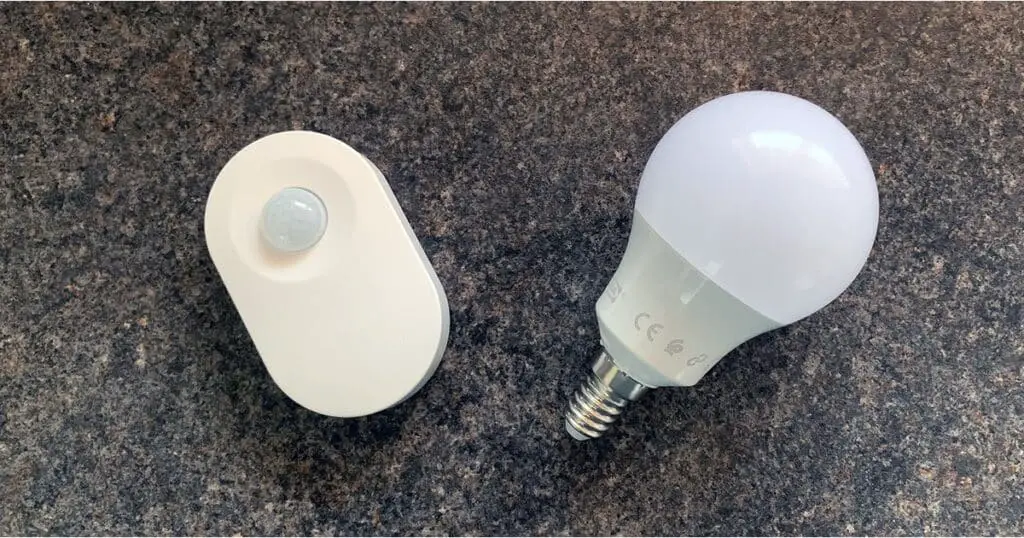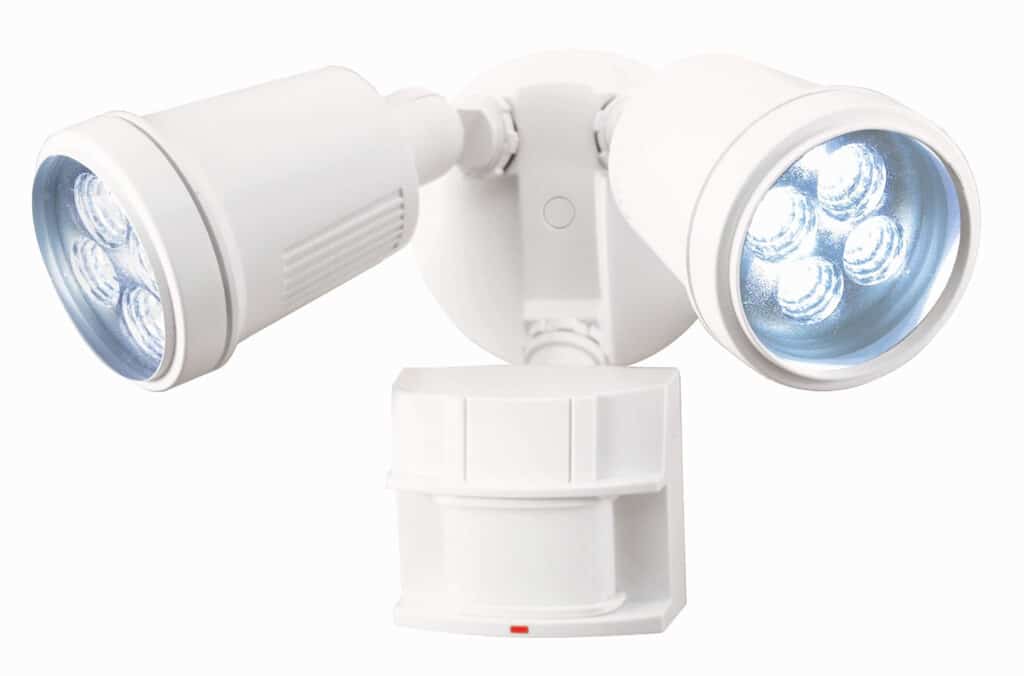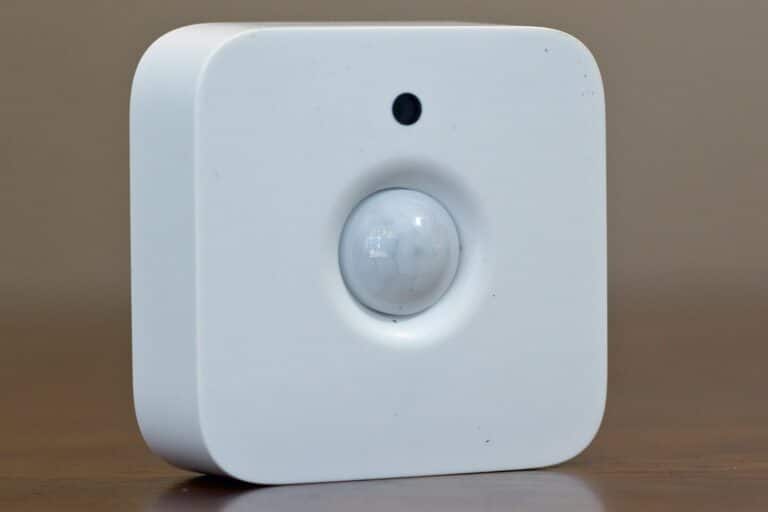Introduction
How Do Motion Sensor Light Bulbs Work: Recently, motion sensor light bulbs have become more popular due to their convenience, energy efficiency, and security. These clever lighting systems detect activity within their range and automatically brighten the area for rapid light. Motion sensor light bulbs use innovative technologies to detect motion and turn on the light.
The most common type of motion sensor used in these bulbs is the passive infrared (PIR) sensor. PIR sensors are designed to detect changes in infrared radiation emitted by objects in their field of view. When a person or object moves within the sensor’s range, it triggers the light bulb to turn on. The PIR sensor works by detecting the heat signatures emitted by living beings and other objects.
As warm objects move across the sensor’s range, the emitted infrared energy changes, and the sensor interprets these changes as motion. This prompts the sensor to send an electrical signal to the light bulb, initiating the illumination process. Motion sensor light bulbs also incorporate built-in timers or adjustable settings to control the duration of illumination. When motion is noticed, the bulb stays on for a few seconds to several minutes. If there is no more movement, the bulb turns off.

Can you put a motion sensor bulb in any light?
You can connect it to any type of decorative fixture—even existing ones—and mount it discreetly off to the side. This article will show you how to install and connect a remote sensor to new or existing lights.
Most typical light fittings can accommodate motion sensor bulbs. They fit a wide range of lighting fixtures, making it easy to add motion sensing to any lighting system.
Standard E26 or E27 sockets are used for motion sensor lights in both home and business lighting. You can put these bulbs in ceiling lights, lamps, outdoor devices, and other things that need lights.
Replace the old bulb with a motion sensor bulb and screw it in. To avoid electrical issues, make sure the motion sensor bulb’s wattage and voltage match the fixture.
Some enclosed fixtures need high-temperature motion sensor bulbs. If you have compatibility questions, check the manufacturer’s instructions or consult a specialist.
How long does a motion sensor light bulb stay on?
Every so often, a motion monitor light will stay on for twenty minutes or more. The time can stay on for more than 20 minutes because the sensor can keep adding minutes to the timer each time it senses movement.
The duration that a motion sensor light bulb stays on after detecting motion varies depending on the specific model and its settings .Most motion sensor light bulbs have customizable lighting durations. Time can be set from a few seconds to several minutes. Common settings include 30 seconds, 1 minute, 3 minutes, or 5 minutes. Some motion sensor bulbs may offer even longer duration options.
The adjustable settings allow users to customize the duration according to their specific needs. High-traffic areas or areas that need quick and continuous lighting may benefit from a shorter duration option to save electricity. However, higher duration settings might be used in locations that need prolonged illumination.
The initial detection of motion, the motion sensor light bulb will stay on for the selected duration as long as it continues to detect motion within that time frame. If no further motion is detected during the set duration, the bulb will automatically turn off.
Do motion sensor lights need electricity?
These light switches use phantom energy by being on standby to respond to movement. The standby light switch isn’t worth buying and powering unless you forget to turn off your 60-watt light bulb 14 hours a day for a year.
Motion sensor lights need power. The motion detecting sensors and light source require electricity.
Most motion sensor lights get their power from a wall outlet or a circuit that is built into the wall. They need electricity to run the device that detects movements and turns on the light when it does.
Electric motion detection sensors in these lights detect changes in infrared radiation or other factors. The sensor turns on the light fixture when motion is sensed. For safety and proper wiring, a skilled electrician should install hardwired ones.
Motion sensor lights may be solar- or battery-powered. Solar panels generate electricity, which is stored in a battery for motion-activated motion sensor lighting. Battery-powered motion sensor lights use only batteries.
How do motion sensing lights turn on?
Activate Your Motion Sensor
Leave the light switch on after installing and activating your motion sensor light. The lights will turn on automatically when the sensor detects movement. With many models, you can change to always-on mode by flipping the wall switch off and on again quickly.
Motion sensors and electronic circuits detect motion and other conditions to turn on motion sensing lights. Different motion sensing technologies have different mechanisms.
Most lights use passive infrared (PIR) motion sensors. PIR sensors detect variations in infrared radiation from nearby objects. When a person or object enters the sensor’s range, it sends an electrical signal to the light to illuminate.
When sensors notice motion, they send electrical signals to the electronics in the light fixture. The wiring then turns on a switch that sends electricity to an LED or incandescent bulb. Motion is what makes the light turn on and shine.
Some applications use microwave and ultrasonic motion sensors in addition to PIR sensors. These sensors produce microwave or ultrasonic pulses and measure their reflections from moving objects. Like a PIR sensor, the sensor turns on the light when motion is detected.

Are motion sensor bulbs good?
You can use motion monitors inside and outside to make your home safer, improve the lighting, and save you money over time.
Yes, motion sensor bulbs are usually thought to be a good way to light a room for a number of reasons.
Motion monitor lights are easy to set up and use. When they notice motion, they turn on automatically and turn off after a set amount of time if there is no motion. This hands-free feature is great for controlling lights in hallways, stairs, and outdoor areas where you don’t want to use your hands.
Motion sensor lights make it easier to save energy. They don’t use power all the time because they only turn on when they sense movement. That’s a lot less energy used than regular lights that are on all the time. You can save money on your power bills and use less energy if you use bulbs with motion sensors.
Better security is another benefit of motion sensor lights. Intruders are scared away by the automatic lighting that turns on in dark areas when motion is noticed. With this extra safety measure, you may feel better and know that your home is safer.
Do motion sensor lights turn on during day?
While many would assume they only work at night, motion sensor lights stay active during the day (as long as they are on). What does this mean? If your light is on, it will automatically illuminate at any motion detection, even in broad daylight.
You can set these lights to do different things, like turn on during the day or only when there isn’t much light. But during the day, most motion sensor lights are turned off. Some lights, like infrared light, can tell when there is a change in movements or other important signs.
During daylight, there is typically enough natural light available, making the activation of motion sensor lights unnecessary and wasteful. To optimize energy efficiency and prevent unnecessary activation during daylight, many motion sensor lights incorporate a photocell or daylight sensor. These sensors detect ambient light and disable the motion sensor in daylight.
This prevents the lights from turning on during the day and saves energy. However, it’s important to note that not all motion sensor lights have built-in photocells or daylight sensors. In such cases, it may be necessary to manually adjust the settings or use a separate timer or control device to prevent the lights from activating during daylight hours.
Do motion sensor lights work at night?
The motion sensor itself works 24/7, but the lights only come on with motion at night. You can also set the lights to stay on dimly all day til dusk. There are a ton of options for how you can set the motion detectors as well…how sensitive, which direction, etc.
Motion sensor lights are nighttime-ready. They’re meant to detect motion and illuminate dark areas. Motion sensor lights improve safety and security in outdoor or low-light situations. When motion is detected at night, motion sensor lights turn on.
Motion sensors including passive infrared (PIR), microwave, and ultrasonic sensors detect motion and other elements .When the sensors feel movement, they turn on the light fixture. Motion monitor lights at night are very helpful in many ways. When motion is spotted, they automatically turn on the lights to scare off attackers.
Better safety and sight Avoid mistakes and make it easier to move around in places with little or no light. You can change the sensitivity, detecting range, and light duration of motion sensor lights to get the best performance at night. This gives the area being lit up a variety of lighting choices.
What is the range of a motion sensor light bulb?
3.3-26 feet adjustable
[ADJUSTABLE DETECTION RANGE] The bulb will automatically turn on when the intelligent sensor detects even a tiny movement in its detection range(3.3-26 feet adjustable) and triggers “turn on light” command. If the detection range is too large, it will also detect movement through glass, wood and stud walls.
The range of a motion sensor light bulb can vary depending on the specific model and its design. The range refers to the maximum distance at which the motion sensor can detect motion. Generally, motion sensor light bulbs have a range that can vary from a few feet up to several tens of feet.
The range is determined by the sensitivity and capabilities of the motion detection sensor used in the bulb. Some motion sensor light bulbs may have a fixed range, while others offer adjustable range settings. Adjustable range settings allow users to customize the detection distance according to their specific needs.
This adaptability lets the motion sensor light bulb be adapted for varied applications and situations. Environment, mounting height, and obstructions can affect a motion sensor light bulb’s range. Walls or other obstructions in the sensor’s line of sight can restrict range.
How many watts does a motion sensor light use?
Depending on the device, their power consumption ranges from 0.5W to 8W for the most powerful ones. To give you an idea of how little this is, a low consumption bulb that is equivalent to the old 100W bulb consumes 30W.
The wattage of a motion sensor light can vary depending on the specific model and the type of light source it uses. Motion sensor lights are available with different wattage options to accommodate various lighting needs and preferences.
Traditional incandescent motion sensor lights typically have wattage ratings that range from around 40 watts to 150 watts. However, incandescent bulbs are gradually being phased out in favor of more energy-efficient options.
Energy-efficient LED motion sensor lights are becoming increasingly popular. LED motion sensor lights typically have lower wattage ratings compared to incandescent bulbs while still providing equivalent or even brighter illumination. LED motion sensor lights can range from around 5 watts to 50 watts, depending on the desired brightness and application.
It’s important to consider the intended use and the desired level of brightness when selecting a motion sensor light. Higher wattage bulbs generally produce brighter light but consume more energy. However, advancements in LED technology have made it possible to achieve bright illumination with lower wattage.

Conclusion
Motion sensor light bulbs have revolutionized the way we approach lighting solutions by providing a convenient and energy-efficient way to illuminate spaces. By incorporating advanced technologies such as passive infrared sensors, these bulbs can detect motion and activate the light source, ensuring instant illumination when needed.
Motion sensor light bulbs work by correctly detecting movement within their range. Passive infrared sensors detect changes in infrared radiation from objects, including heated bodies. Motion triggers the light bulb to turn on and generate light.
One of the key advantages of motion sensor light work bulbs is their energy efficiency. These bulbs only illuminate when motion is sensed, saving electricity. This reduces electricity expenditures and makes illumination more eco-friendly. Motion sensor light bulbs offer safety. Intruders are deterred by their automated lighting of dark regions when movement is detected.

